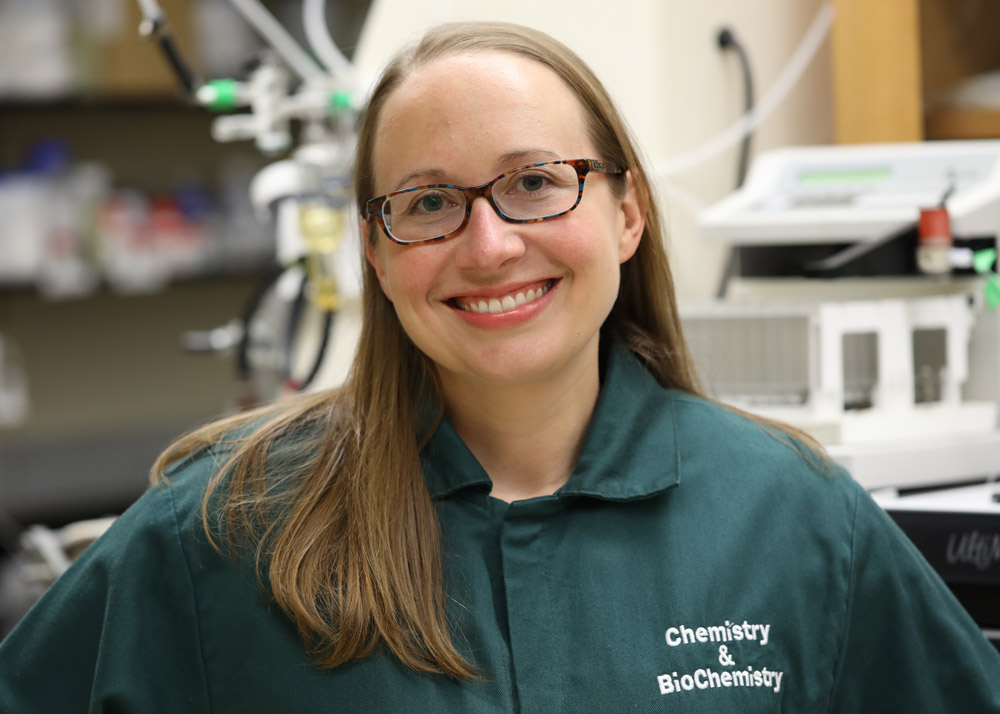Analyzing the Sum of the Parts

Elyssia Gallagher, PhD, Assistant Professor of Chemistry and Biochemistry
Glycans are a class of biomolecule found within the body that cover cells and have important biological implications. The ways in which they interact with viruses such as the flu or bacteria and initiate infection is one example of this. Their importance is widely recognized, but glycans are difficult to characterize.
For analytical chemists like Elyssia Gallagher, PhD, that challenge presents an opportunity to blaze new paths in search of a solution.
“My goal is to analyze molecules, or characterize them,” Gallagher said. “Specifically, I’m really interested in glycans — sugar structures that get added to your cells and various proteins in your cells. For a long time, they’ve been very hard to characterize.”
The difficulty in characterizing glycans comes in part from their uniform weight. Other molecules can be characterized through their unique masses or weights. A molecule’s entire mass and the weights of its individual components provide clues into the molecule’s composition, its structure and its function. Different glycan structures can have the same weight as other structures. However, because the atoms are arranged in very disparate ways throughout that same weight, the function can be very different.
Gallagher’s CAREER award is an NSF method development grant. Her goal is to uncover new methods for analyzing and understanding the function of glycans, providing deeper insight into the ways they work and impact the body.
Molecules are often characterized through a technique called mass spectrometry. Analytical chemists measure the molecules’ mass and look at their 3D structure, which provides a window into their function in the body. Breaking the molecules apart and analyzing their component parts further paints that picture. Gallagher’s charge is to develop more complex analysis methods that eventually lead to new insights.
“In terms of devising new methods, there are many challenges. Some of them are related to the fact that as society we haven’t had the tools to address certain biological questions,” Gallagher said. “These new tools can come in the form of advances in computing power, instruments that can measure small amounts of sample or very small sizes, or various other factors. In any type of method development work, we aim to do something new, something which hasn’t been done before.”
Active learning plans will be developed for Central Texas high school students to learn college-level science concepts, fulfilling the grant’s educational component.